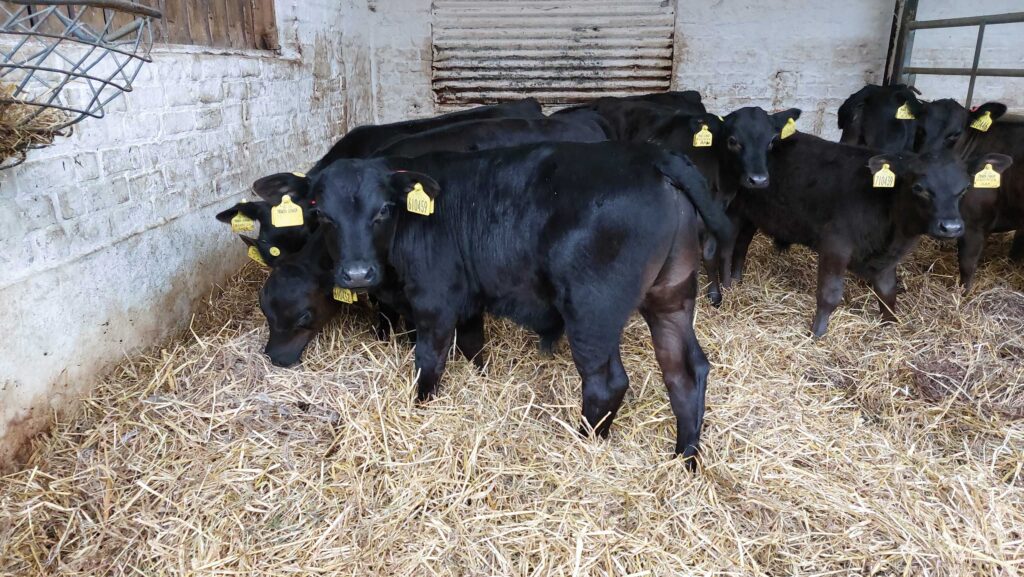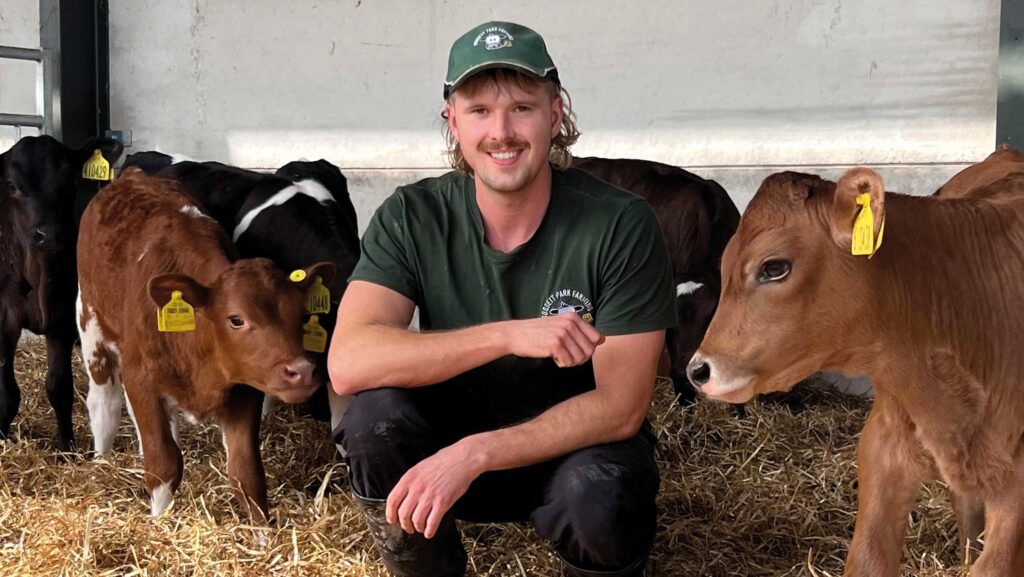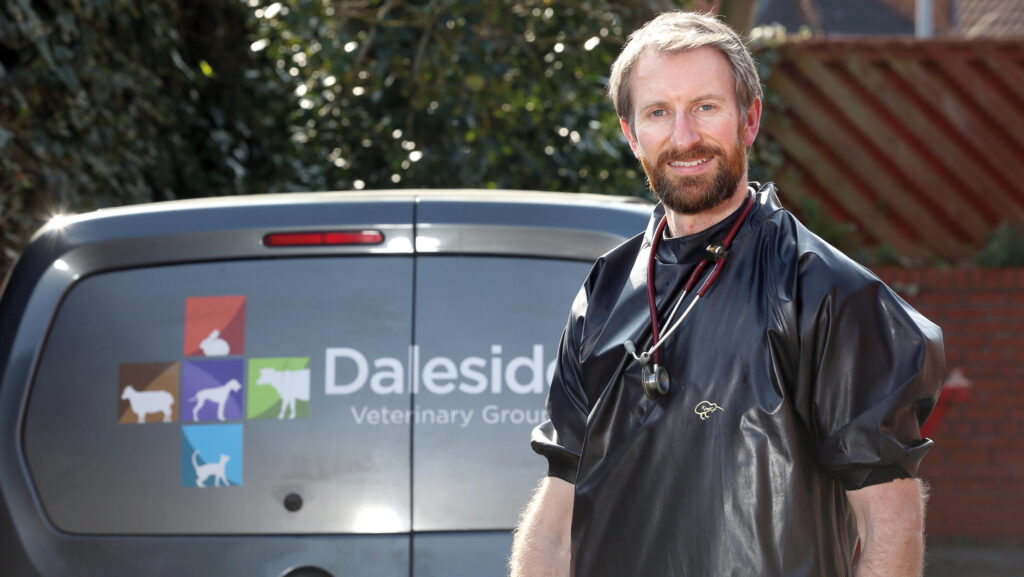How lung washing slashed antibiotics use in calf shed
 © MAG/Shirley Macmillan
© MAG/Shirley Macmillan A Welsh dairy farm has reduced its antibiotics use in calves by 90% and seen a big uplift in calf health since using “lung washing” to identify the pathogen responsible for a cycle of pneumonia outbreaks.
Previously, pneumonia was the cause of most calf mortalities at Lower Park Farm, near Rossett, Wrexham, where the Tomlinson family produce milk from a 600-cow split block-calving herd.
Although most calves survived after targeted antibiotics treatment, those that entered the herd struggled in their first lactation.
George Tomlinson, who farms with his parents, Richard and Sadie, and brother, William, says:
“Once a calf has had pneumonia, it will almost certainly have an impact when she calves into the herd.
“They are much more susceptible to dropping out of the herd in that first lactation because they can’t cope with the stress of calving and milk production – we would get three or four in each block.”
See also: Why vaccination is not a silver bullet for calf pneumonia
Farm facts
Lower Park Farm, Rossett, Wrexham
- 567ha farmed
- Predominately Irish Holstein Friesian and British Friesian cows
- Average 6,150 litres annual milk yield at 4.65% butterfat and 3.56% protein
- Milk sold to Calon Wen
Turning point
A series of housing and management improvements was introduced, but a key turning point came when samples were taken from calves’ lungs using bronchoalveolar lavage, otherwise known as lung washing.
This involves inserting a tube through the nose into the trachea of calves with symptoms of respiratory infection.
Crucially, the procedure took place before the calves were treated with antibiotics.
This allowed the strain of the disease-causing pathogen to be clearly established through either culturing or a PCR test.
The primary pathogen at Lower Park Farm was identified as Histophilus somnii.
The appropriate vaccine was then matched to the pathogen and calves were vaccinated at six weeks of age, followed by a booster four weeks later. Vaccination cost about £14 a calf.
This testing and vaccination programme was carried out on calves born in the spring and autumn of 2023.
As a consequence, just one animal needed antibiotics treatment for pneumonia.
George says it is nearly 100% effective in preventing illness because it inhibits the specific pathogen it was developed to prevent.
As the lung washing was undertaken as part of a trial, there was no cost to the business.
However, George says he would pay for testing if there was another pneumonia flare-up – which can happen if the organism responsible changes.
A bronchoalveolar lavage test for sampling two animals (the recommended number) costs about £350-£400.
This covers the vet’s time and equipment and a laboratory fee for a pooled sample.

© George Tomlinson
Health checks
Other measures have also been introduced at Lower Park Farm to protect calf health. Chief among these is a purpose-built shed for 120 calves.
This investment was made in 2024 principally because of the high numbers of animals being retained and reared following six years of bovine TB movement restrictions.
Home-grown barley straw has replaced woodchip (with added lime as an anti-bacterial agent) as bedding for the cows, as there was concern this was causing respiratory issues in the younger animals.
Pens get a full clean every three weeks and stocking density has been lowered. Monitors have been installed to keep track of humidity levels to allow additional ventilation to be introduced if needed. And George carries out a comprehensive visual assessment of calf health once a week, in addition to the usual daily checks by the dedicated calf rearer.
“I spend half an hour every Wednesday having a really good look at the calves, running them around a bit to see if anything starts coughing, which might indicate early stages of pneumonia,” he explains.
“If we have any concerns, we temperature-check and monitor that calf.”
Vet verdict on lung washing

Vet Guy Tomlinson © Daleside Veterinary Group
Vet Guy Tomlinson believes lung washing is the closest thing to an on-farm “gold standard” to pinpoint the primary causal pathogen of respiratory disease in calves.
Other testing methods such as blood sampling, deep nasopharyngeal swabbing or trans-tracheal washing can help build a picture of which pathogens are involved, but no test is perfect.
Swabbing the upper respiratory tract can identify several pathogens, but it can be difficult to interpret which is the primary problem, and which may be secondary pathogens or commensals.
“Lung washing gives a far more accurate picture of what the pathogens are,” says Guy, of Daleside Vets.
Lung washing costs more than these methods because it is more complex and time consuming.
But, with a wide range of respiratory vaccines available for calves and cattle, choosing the right one to match a farm’s pathogens makes it more likely that investment in vaccination is effective, he adds.
Lung washing can be used to test for bacterial and viral pathogens and is always carried out by a vet.
Procedure
A tube is introduced through the calf’s nose into the airway and a second, narrower tube is then passed inside the first.
A 60ml sterile buffer solution is syringed through the inner tube and fluid drawn back up from the lungs.
To achieve a good sample that will give an accurate result, it should be done on a calf with early symptoms, as the longer they have been infected, the greater the likelihood of a secondary infection.
Sampling should also be done before any treatments are administered.
Other pneumonia control factors, such as nutrition, bedding and the environment, are examined as well.
“Knowing what the bugs are won’t necessarily change calf health if there are other issues with calf management,” explains Guy.
“Even lung washing doesn’t always get to the bottom of the issue first time because a problem can be complex, but it is key to knowing which vaccine is most appropriate”.
Bespoke vaccines
On some farms he has worked with, lung washing has identified a pathogen for which an off-the-shelf vaccine is not commercially available.
In these cases, the lung wash samples can be cultured and a bespoke vaccine produced by a specialist laboratory, which is refrigerated before use on the farm.
As it is not a quick or straightforward process, Guy advises gathering pure samples of the pathogen from multiple calves showing acute symptoms of respiratory illness to establish whether it is the main causal agent.
The process of producing the autogenous vaccine can take about three months and requires a live sample of the pathogen, so correctly preserving samples is key.
Once the first batch has been manufactured, the client will use it on a small batch of calves. These will be closely monitored, including recording rectal temperatures.
“Only once this data has been returned to the lab and approved will the rest of the batch of vaccine be released for sale to the farm,” says Guy.
